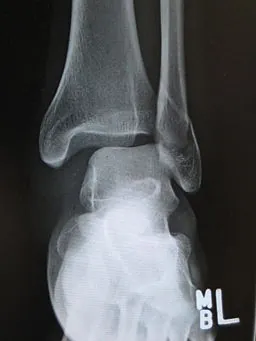Maissoneuve Fracture
Maisonneuve Fracture
When people are involved in car accidents, the collision can sometimes be more serious than a simple fender bender. When a motorist turns the wheel sharply to avoid an object in the road in front of them, the car will often flip. Other times, cars get T-boned in the driver’s door, causing serious injuries for all parties. When the driver side door is involved, the ankle can sometimes get pinned and rolled up along with the metal. This can cause serious damage to the ankle and lower leg, causing a Maisonneuve Fracture. This is a rare but serious bone fracture of multiple portions of the foot, ankle, and lower leg.
Maintaining the Stability of the Foot
Part of the stability of the foot comes from the lower leg, ankle, and foot working in concert. The ankle is protected by several ligaments, including the talofibular and interosseous ligaments. These ligaments wrap around the outside of the ankle, helping to prevent people from “rolling” their ankle. People with flat feet or other foot conditions know that sometimes the foot can land on the side of the bone rather than the bottom. This can lead to a painful rolling of the ankle, often seen in basketball games or tennis matches. This rolling stretches this ligaments, which help to protect the connection between the ankle and the lower leg. When a car accident catches the ankle and rolls it, this can actually rupture the ligaments. This leads to a subluxation (incomplete or partial dislocation) of the ankle relative to the foot and lower leg. This subluxation will continue to have ramifications up the leg because the twisting of the ankle will start to twist the lower leg without the ligaments in place to protect it. When the lower leg twists, this can lead to a spiral fracture of the upper third of the fibula. All of these injuries together are called a Maisonneuve Fracture.
Symptoms of Maisonneuve Fracture
The symptoms of a Maisonneuve Fracture are exactly what people would expect from a broken leg and ankle. The ankle and leg will immediately start to swell up, causing massive pain. People will be unable to move, let alone walk on, the leg without significant pain. The subluxation of the ankle will cause significant difficulty in rotating the foot. The broken fibula will make it challenging to rotate the lower leg. The Maisonneuve fracture of the fibula is often considered one of the most unstable ankle injuries.
Diagnosing Maisonneuve Fracture
The diagnosis of a Maisonneuve Fracture is made via radiology imaging. The x-ray is the first modality due to its speed and low cost. It can be challenging to see the fibular fracture on this x-ray, but the widened ankle is obvious from the subluxation. An MRI scan is sometimes required to visualize the fibular fracture and is definitely needed for confirmation of the ligament tears. Sometimes this scan isn’t necessary to confirm the ligament tears in the case of a convincing clinical picture.
Surgical Repair of Maisonneuve Fracture
A Maisonneuve Fracture always requires surgery to fix. The ankle ligaments are surgically repaired using replacement ligaments from either a cadaver or elsewhere in the body. While the ankle is open, the subluxation is repaired. The fibular fracture will require surgery to fix if displaced. It the fracture is not displaced, the fracture is simply casted and allowed to heal. Bones heal in around six weeks. The ligament repairs require months of rehab to graft appropriately.
Sacramento Personal Injury Lawyers
I’m Ed Smith, a Sacramento Bone Fracture Attorney. If you or a loved one has suffered a severe injury due to no fault of your own, please give me a call anytime at (916) 921-6400 or (800) 404-5400 for free and friendly advice.
Member of Million Dollar Advocates Forum.
Our injury lawyers have a long track record of success as evidenced on our past verdicts and settlements page.
See our outstanding client reviews on Yelp, Avvo and Google.
:DR

